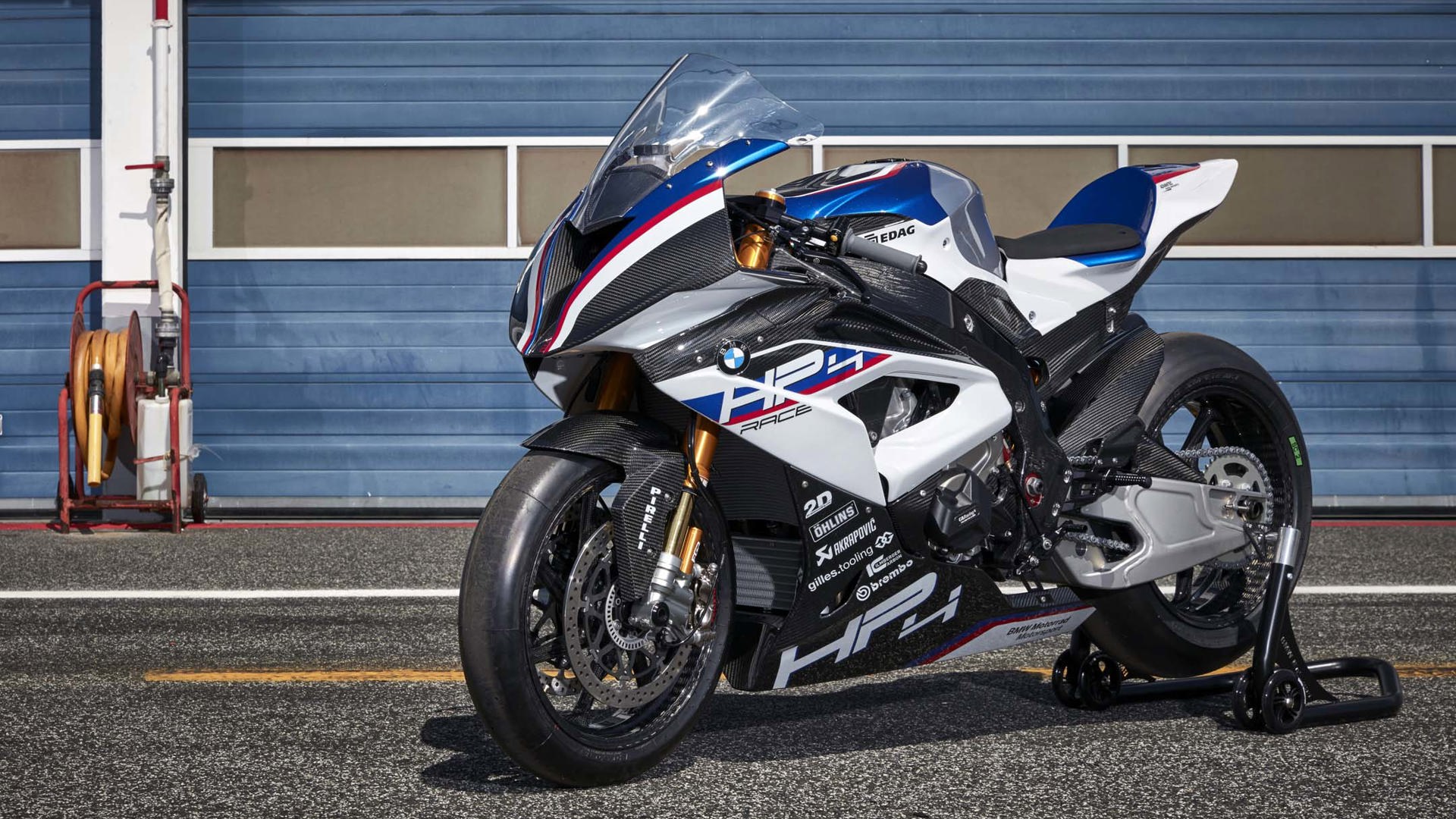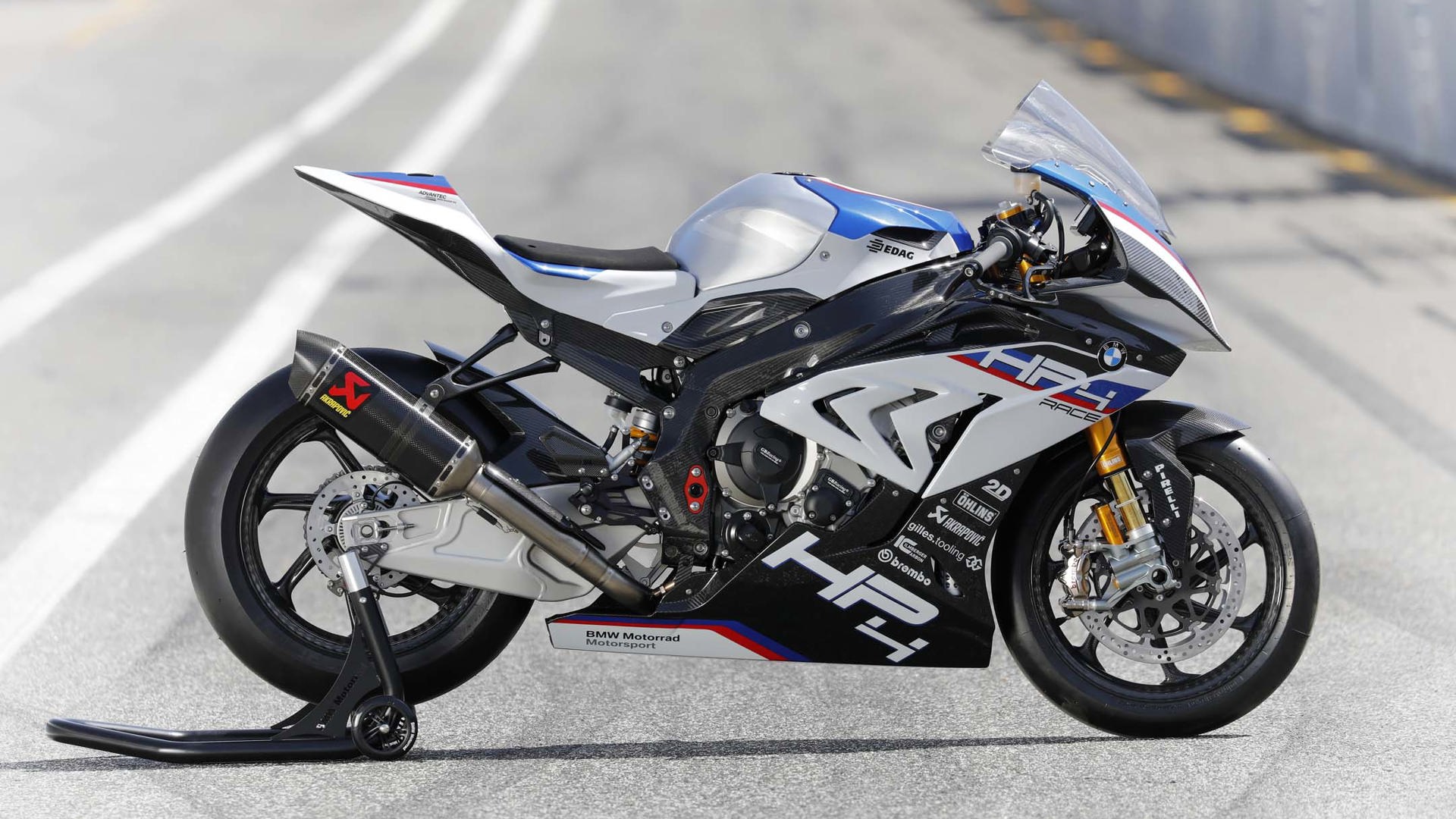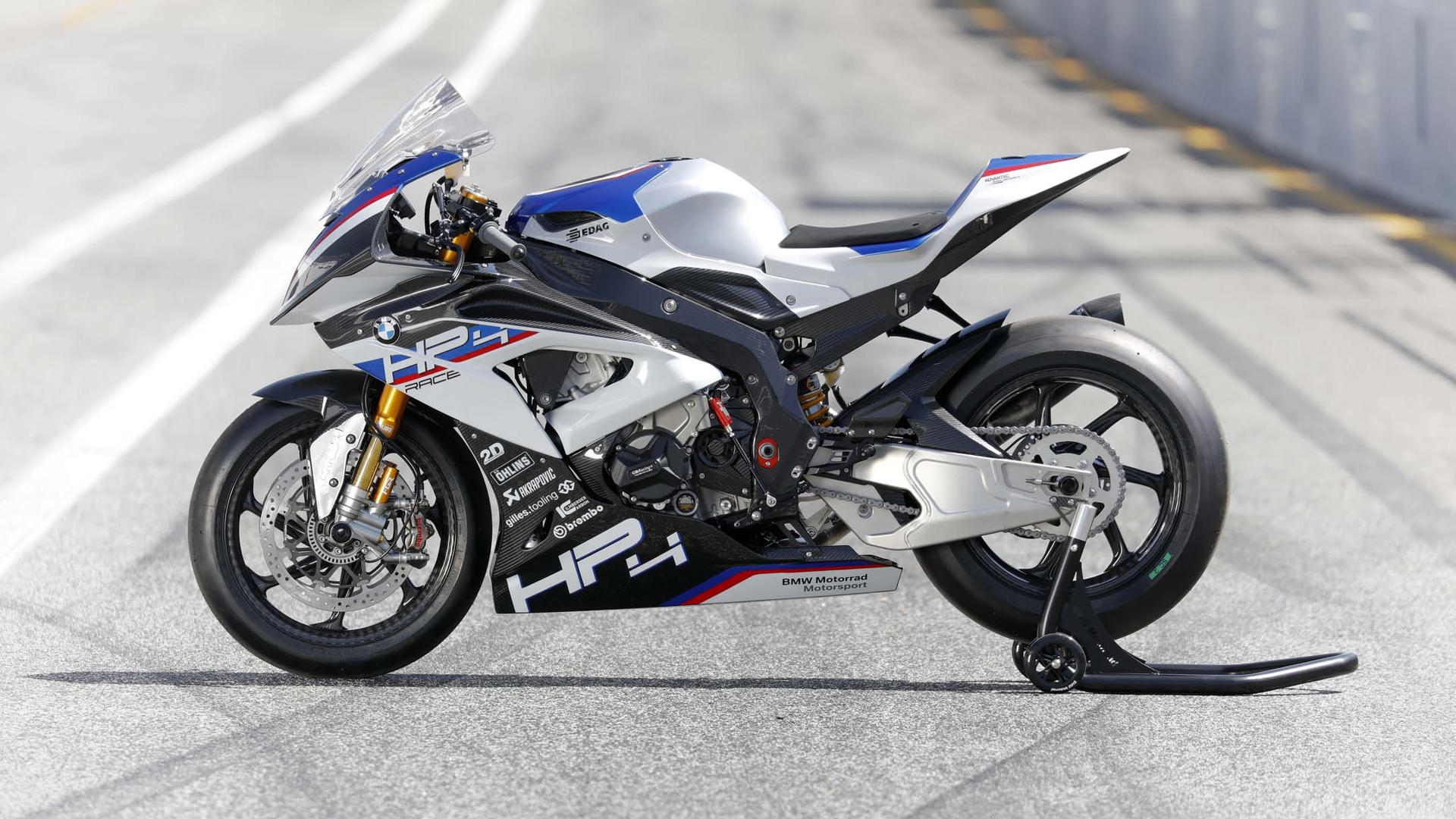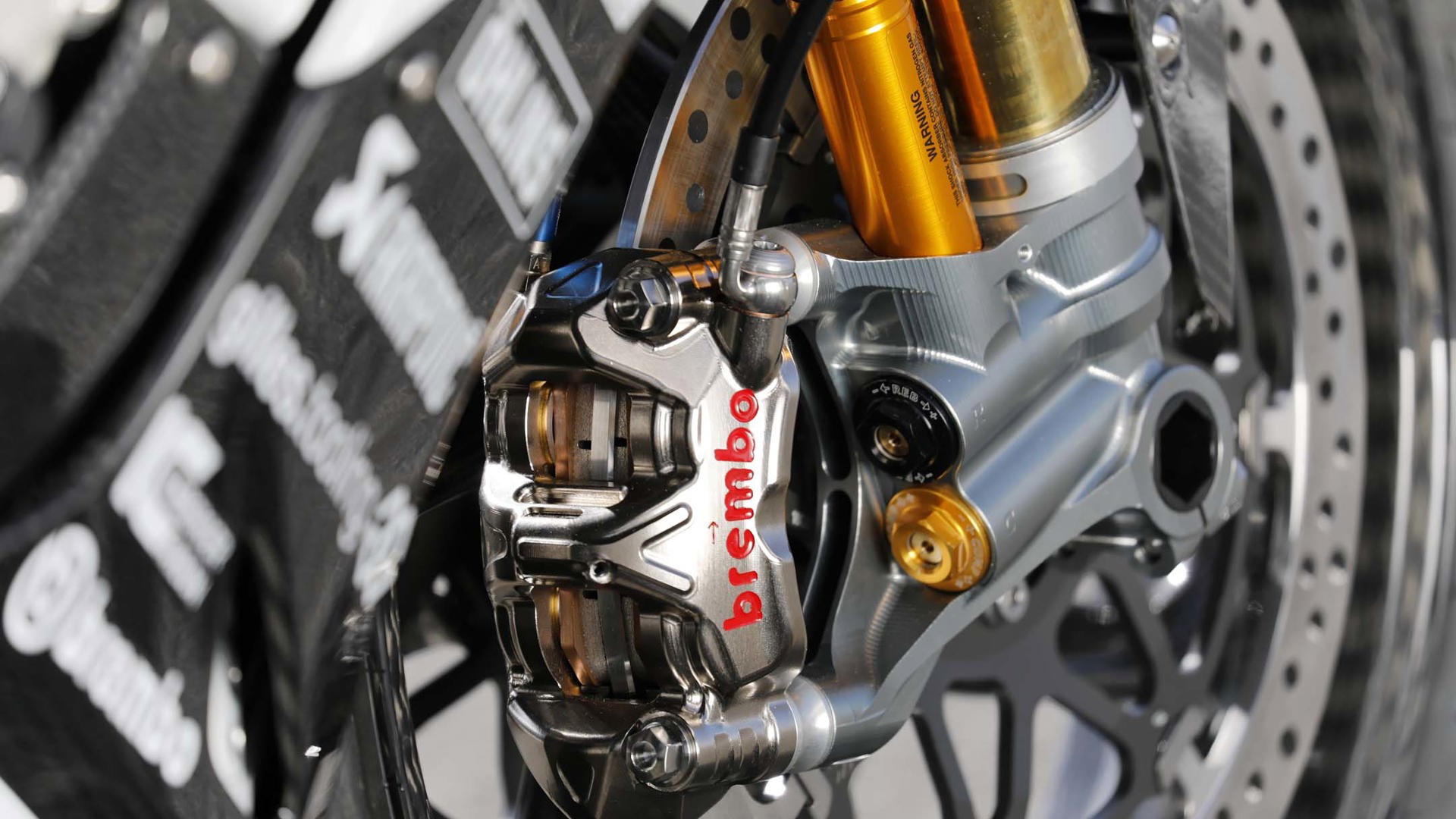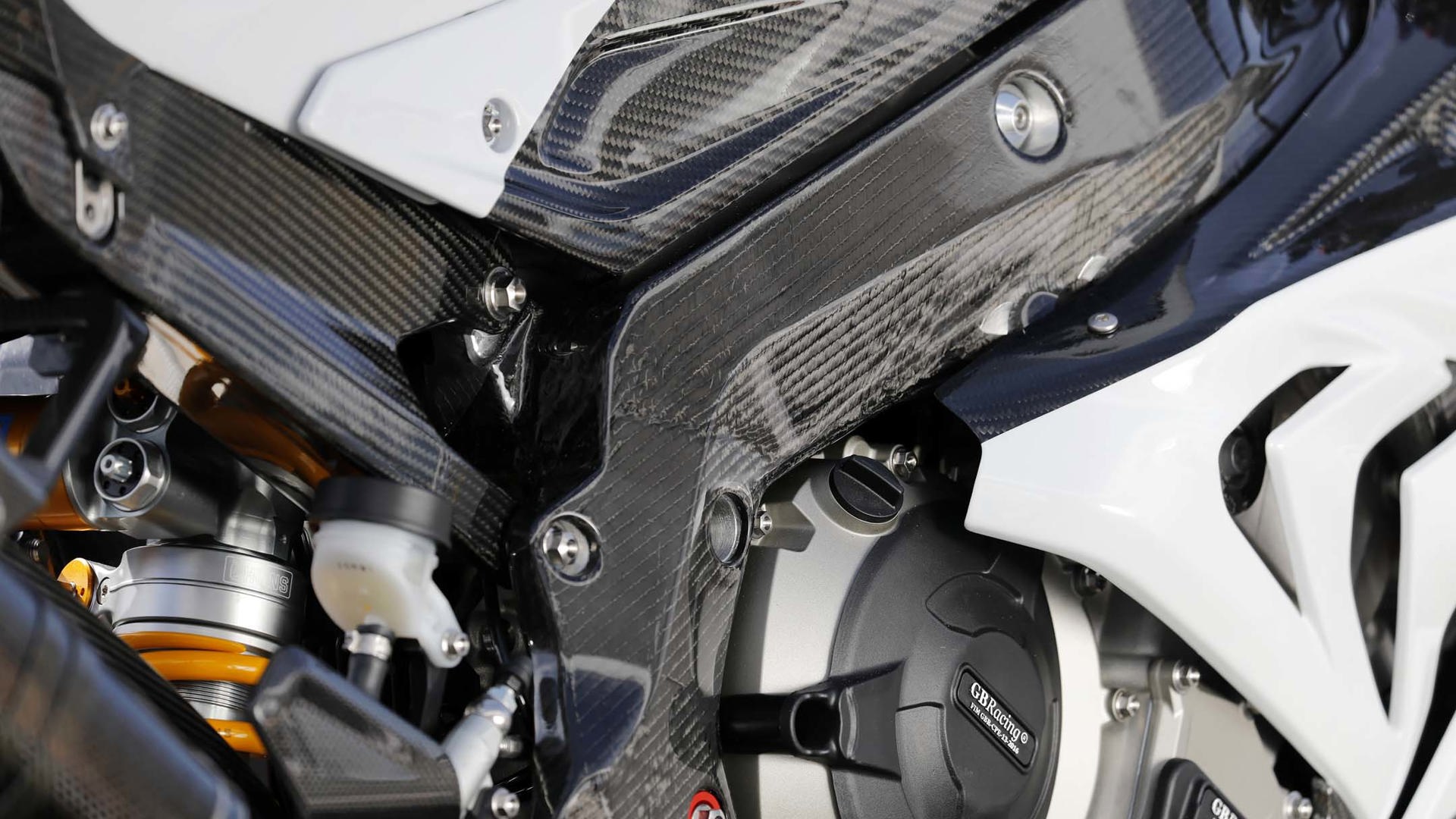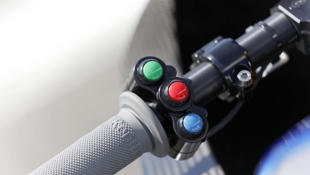ESTORIL, Portugal – The 2018 BMW HP4 Race is a limited-production (750 units) better-than-World-Superbike-spec motorcycle. It’s a bike that can be ridden off the showroom floor (well, not really but we’ll get to that) and lined up on a World Superbike grid, and – in capable hands – race competitively.
I think they did it for fun.
Despite resembling the S1000RR, it shares nothing with its sibling other than engine castings. It utilises a lightweight carbon-fibre frame and subframe, wheels and bodywork. Its 999 cc inline-four produces 215 horsepower (16 more than the S1000RR, 5 hp less than the Althea S1000RR WSBK superbike), and it weighs 171 kg full of gas, which is 37 kg less than the street bike, and 8 kg less than the superbike.
The irony is that despite being hand-built at BMW Motorrad Motorsport’s factory race shop in Berlin, using many of the same components found on the FIM World Superbike Championship race bike, the HP4 Race cannot be raced. Homologation for most racing series dictates that competing machines must be based on commercially available street bikes. And the HP4 Race is no street bike.
BMW invited us to ride this exclusive machine at Circuito do Estoril in Portugal.
How much now?
Okay, by now you’re getting that this is not a variation of the 2017 BMW S1000RR, but rather an entirely new machine. And it has a new price to match: $95,000. You read that right. If you think that’s outrageously expensive, well, this bike is really, really not for you.
Here’s what you get for almost a hundred large, starting with the engine. BMW Motorrad Motorsport sells three different hand-built race engines to race teams around the world. Identified by their numeric product codes, the 5.2 engine is the base race engine, the 6.2 has an altered cylinder head for more power, and the 7.2 is the full superbike-spec engine. Prices vary from €10,000 to €23,000. The HP4 race uses the valvetrain from the 6.2 engine, and the lighter crankshaft and connecting rods from the 7.2 engine. Within the engine cases is a close-ratio gearbox, on which only third gear is the same as on the street bike.
Comparing chassis geometry with the S1000RR is pointless since the rake angle, trail, triple-clamp offset and swingarm pivot height are all adjustable, and all the necessary inserts are included with the bike. You also get three different countershaft sprockets and five rear sprockets to alter the final drive ratio for different tracks. Ride height, seat height and footpeg height are also adjustable.
Öhlins provides the suspension components, and they’re the real WSBK deal. The fork is the FGR300 World Cup, which is designed so the brake calipers need not be removed to remove the wheel; the shock is the TTX36 GP – both items are fully adjustable and identical to the parts found on the Althea race bike. Brakes are race-spec GP4-PR Brembos up front, with a four-piston caliper at the rear (single-piston on the street bike), and there’s no ABS.
The electronics
Further separating the HP4 Race from the street bike are the electronics, which are much more elaborate. It has four ride modes (Wet, Intermediate, Dry 1, Dry 2), lean-sensing dynamic traction control with 15 levels of intervention, adjustable wheelie control that intervenes only in the bottom three gears, adjustable 15-level engine braking, launch control that works in first and second gears, and a pit-lane speed limiter.
Also part of the electronics package is quick shifter that works up and down, and a 2D data logger with an instrument panel that can be configured to display a multitude of information including TC, engine-braking and ride-mode settings, GPS-enabled lap times, as well as more elaborate data like throttle opening, front- and rear-wheel speed, lean angle, and if the optional sensors are installed, brake pressure and suspension travel.
Adjustments to the electronics can be made on the fly through the specialised, race-only switchgear, which is simplified compared to a street bike (just three large buttons on either side), and very easy to use.
Yes, it’s blisteringly fast
We’re allotted four 20-minute sessions on the HP4, and there are also S1000RRs we can ride anytime we’re not on the hero bike. The only changes made to the stock bikes are the reversed gearshift pattern to match the HP4’s GP shift pattern, and the Pirelli Diablo Superbike Slicks in the SC2 compound, also matching the HP4’s rubber.
Hopping onto the HP4 after two sessions on the S1000RR immediately reveals a much more extreme riding position, with a higher seat and abnormally high footpegs. It takes less than half a lap to get completely comfortable on the HP4, which feels much lighter, stiffer, and more precise than the street bike, which itself is a stellar-handling motorcycle. It steers with much more precision than the street bike, and takes less physical effort to ride, especially through the tighter turning transitions.
Throttle control is as near to perfect as possible. Because the ride modes offer different power curves in the first three gears, the throttle is remarkably easy to manage, especially noticeable when exiting the tight chicane in first with the throttle opened full while still cranked way over. Of course, once on the front straight and in fourth gear, acceleration is brutal enough to flatten eyeballs.
The traction and wheelie controls are almost completely invisible, allowing the bike to rocket forward with blistering speed without spinning or lifting a wheel – at least until you hit fourth gear, where the front wheel can lift at very high speeds if you’re not careful. The stock bike often lifted a wheel coming out of the slower turns, making it feel faster (most likely not), but also requiring more effort to ride.
Exiting Estoril’s final corner at more than 160 km/h in fourth and rolling on the throttle full produces acceleration with such force that I strain to pull myself forward and tuck in behind the windscreen. Braking for the 90-ish degree right-hand first turn at the end of the 300-plus km/h front straight is hard enough to make blood rush into my face, and the Brembos do this consistently with very little fade.
The BMW HP4 Race is not a superbike repli-racer, but rather a true superbike-spec motorcycle. Sure, it’s expensive, and there are other costs that come with ownership: BMW recommends replacing the engine at 5,000 km intervals, at a cost of about €15,000, which is claimed to be cheaper than rebuilding the existing engine.
But that’s the price you have to pay for WSBK performance. BMW claims it built the bike to introduce carbon-fibre technology to motorcycling, a feat the company has already tackled on the automotive side with its i3 electric and i8 hybrid cars.
I think they did it for fun.
Wealthy track day enthusiasts and well-to-do collectors will probably snap up the bike, of which we might see about 10 come to Canada. If you can afford to add one to your collection, it’s worth every penny.
But if you do buy one you should absolutely bring it to a racetrack, or you’ll have no idea what you’ve got.

